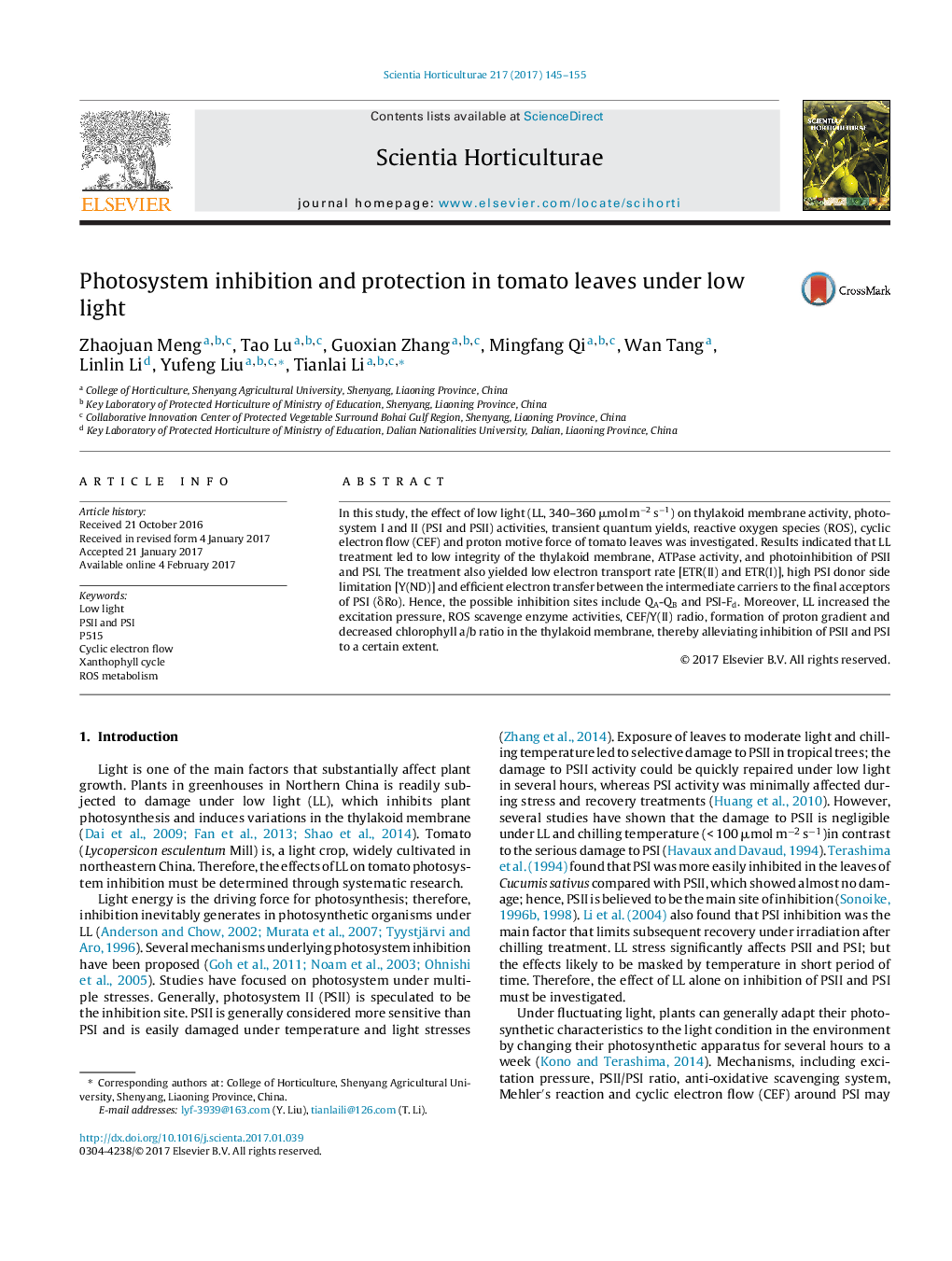| Article ID | Journal | Published Year | Pages | File Type |
|---|---|---|---|---|
| 5769685 | Scientia Horticulturae | 2017 | 11 Pages |
â¢The possible inhibition site under low light is proposed.â¢The protection or self-regulation mechanism including proton gradient is provided.â¢P515 signal is a new method to the activity of photosynthetic apparatus.â¢P515 changes on thylakoid membrane can explain photosystem inhibition and protection.
In this study, the effect of low light (LL, 340-360 μmol mâ2 sâ1) on thylakoid membrane activity, photosystem I and II (PSI and PSII) activities, transient quantum yields, reactive oxygen species (ROS), cyclic electron flow (CEF) and proton motive force of tomato leaves was investigated. Results indicated that LL treatment led to low integrity of the thylakoid membrane, ATPase activity, and photoinhibition of PSII and PSI. The treatment also yielded low electron transport rate [ETR(II) and ETR(I)], high PSI donor side limitation [Y(ND)] and efficient electron transfer between the intermediate carriers to the final acceptors of PSI (δRo). Hence, the possible inhibition sites include QA-QB and PSI-Fd. Moreover, LL increased the excitation pressure, ROS scavenge enzyme activities, CEF/Y(II) radio, formation of proton gradient and decreased chlorophyll a/b ratio in the thylakoid membrane, thereby alleviating inhibition of PSII and PSI to a certain extent.
